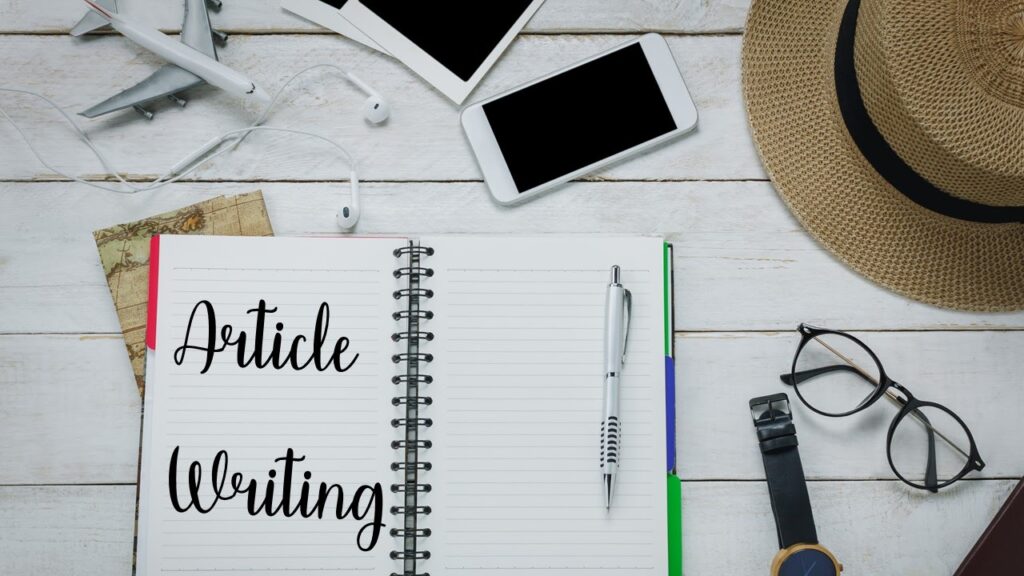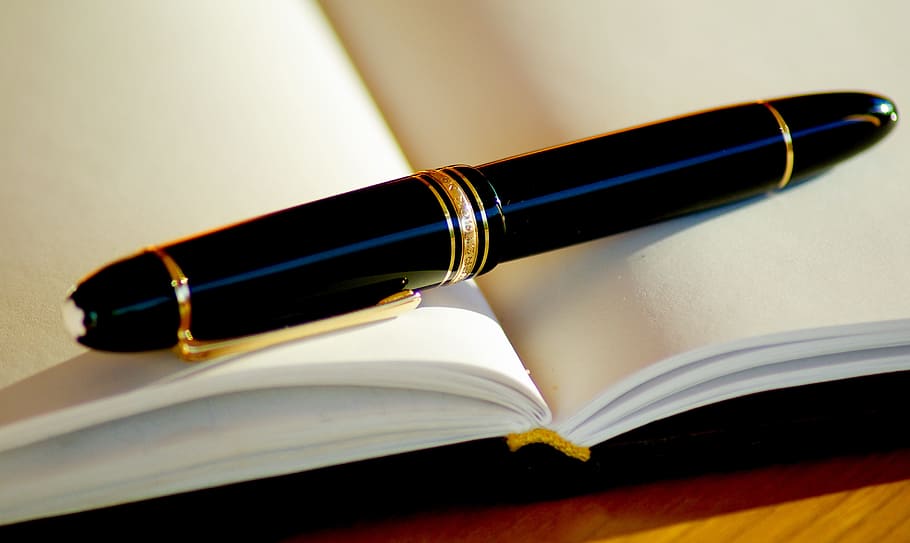
Writing articles or posting a piece of material on the internet, your main goal should always be to generate something that readers will enjoy (i.e., read, comment on, and share with others).
Writing can be a therapeutic exercise in which you discover more about yourself, examine your feelings and thoughts, and even accomplish some psychological healing.
What Qualifies as an Excellent Article?
Before you begin writing a blog, ensure that you understand the answers to the following questions: “Why would someone read this entire article?” and “What keeps our audience coming back for more?”
To begin, a well-written article is both interesting and educational. Articles should answer readers’ questions and assist them in resolving a problem they’re having — and they must do so in an engaging manner.
It is not sufficient to simply respond to someone’s question; you must also provide actionable steps while remaining engaging. For example, your introduction should pique the reader’s interest and encourage them to continue reading your post. Then, employ examples to pique your readers’ interest in what you’re saying.
Good Article
Bear in mind that a good article is engaging to read and provides educational or entertaining content to its readers.
Always keep the thumb rule in place. To write food, you must read constantly. Writing is always a distant second. To write well, whether it’s an article, a blog post, or a book, you must be an avid reader, not by choice or coercion, but by passion. To learn more how to become a good writer read Become a better writer.
Thus, how do you actually write one of these engrossing and informational subjects?
If you want to write for magazines or newspapers, you’ll need to adapt to a rapidly changing medium thanks to digital technology. Many of today’s magazines are consumed primarily online, either through web browsers or through apps such as Apple News.
Certain well-known weekly magazines are now published monthly or even quarterly. On the other hand, new online publications are popping up all the time, and many of them are looking for new writers with intriguing storey ideas to pitch. Here are some writing tips to assist you in breaking into the magazine or newspaper writing world.
1. Analyze articles that you find enjoyable to read.
Consider magazines/newspapers to which you subscribe or read on a regular basis. You could also target publications about which you are unfamiliar but would like to contribute articles. At least three to four recent issues of the publications, paying close attention to the following.
A) Verify that the bylines correspond to the names on the masthead. If the bylines do not match the masthead, it is possible that the publication employs freelance writers to contribute to its issues.
B) Conduct a search for the names and contact information of editors responsible for specific subject areas. If you’re interested in writing about pop culture, identify the arts editor’s name and contact information. If you’re more interested in writing about current events, look for the managing editor’s or features editor’s name and contact information. Avoid contacting the executive editor or editor-in-chief, as they are too high up the food chain and are unlikely to interact with you as a freelance writer.
C) Take note of recent topics or issues covered in the publication, as well as the publication’s angle or spin on the subjects. Is the publication inclined to take a more controversial stance on a subject or a more objective stance? Is the publication experimental in terms of format and content, or is it more traditional?
Consider the publication’s headlines
D) Consider the publication’s headlines and how the articles begin. Take note of any shocking or ambiguous headlines. Examine the articles to determine whether they begin with a quote, a statistic, or an anecdote. This will give you a good idea of the type of writing that is published in that publication.
E) Take note of the sources cited in the articles. Are they academics or are they more common folk? Is there a large number of sources cited, or a variety of different types of sources cited?
Take note of how authors conclude their articles in the publication. Do they conclude with an evocative quote? Is this an intriguing image? Or do they have a concluding thought that is audacious?

2. Select a subject on which you are an expert while composing an article
You’re more likely to write high-quality magazine articles if you choose subjects that fall within your areas of expertise and interests. Publishers are constantly on the lookout for articles that contain detailed information or are extremely authoritative. I would recommend that you make a list of all the things you believe you are exceptionally good at. Then, choose those that you believe you can easily sell to various magazines.
Consider recent trends or subjects that you discussed with a friend or peer. If you recently had a good conversation with a friend about a trend, topic, or issue, consider how you might be able to turn that conversation into a storey idea. Perhaps your friend was discussing a new social media trend or the issue of racism at her daughter’s school.
Concentrate on conversations that were passionate or evocative and that dealt with a current issue or trend. These energising exchanges do not have to be about global issues or a major issues. Conversing with your neighbours, friends, and peers can provide an opportunity to discuss local issues that may develop into an article idea for a local magazine.
At times, articles can be deluged with information — both for the reader and the writer. The trick is to organise the information in such a way that readers are not intimidated by its length or quantity. This organisation can take various forms — sections, lists, or tips — depending on what is most appropriate. However, it must be structured!
Consider the post “How to Use Snapchat: A Comprehensive Look at HubSpot’s Snapchat Strategy.” Due to the piece’s length, it has been divided into several sections using descriptive headers. The major sections are divided into subsections that delve deeper into the subject matter, making the content easier to read.
All you really need to do at this point is outline your post. This way, prior to beginning to write, you’ll know which points you want to cover and in what order.
3. Select intriguing angles.
Your articles will have a better chance of being published if they are extremely interesting. Examine your chosen subject thoroughly and identify new angles that have not been discussed previously, as well as those that will seize the attention of your target audience.
Additionally, avoid writing about broad topics. Publishers dislike articles that contain an excessive amount of information that is not truly useful or beneficial to their clients.
Even if you believe you are an expert on your chosen subject, I am sure it would not hurt to conduct research. This will undoubtedly enable you to obtain more useful and current information, which will enhance the informative and valuable nature of your articles in the eyes of your target audience.
Examine pertinent resources and, if necessary, consult with other experts. Perhaps you are genuinely interested in a subject that has been extensively covered in numerous publications, but you simply cannot stop thinking about it. Consider a novel angle on the subject to keep it feeling current, relevant, and novel. This will help editors identify your magazine article and engage your target audience.
Rather than writing about the psychological effects of social media on teenagers, as has been done numerous times in numerous magazines, you could write about a demographic that is rarely discussed in relation to social media: seniors and the elderly. This will provide you with a new perspective on the subject and ensure that your article is not simply regurgitating a familiar angle.
4. Edit and Re-edit.
During the editing process, you refine your copy to convey the message you want to convey in the fewest possible words.
I spent a considerable amount of time editing this piece. Indeed, you’d be surprised at how much time I spent on its post-production. However, I did so in part because I enjoy the work. I enjoy tinkering with words, cutting and shifting them around until the language comes together. I become absorbed in it, but I digress.
The true value of editing is evident in the final product: an article that is clear, concise, and hopefully addictive to the reader.
“This axiom contains one of the most valuable secrets to writing effective and persuasive copy,” Sugarman writes, “because it is during the editing process that you transform that raw emotional outpouring of thoughts and ideas into a polished, harmonious, resonant tuning fork that will resonate perfectly with your prospect.”
Submission Guidelines
Consult the style sheet or submission guidelines for the magazines to which you wish to submit your articles. Each magazine has its own set of guidelines regarding the subjects, approach, and tone that should be used. If these are not published, I recommend that you read all of the articles that were referenced in the magazines to which you wish to submit your copies. This will give you a good idea of what they’re looking for.
Concise articles are addictive. As a result, we must Trim the Fat. Here is a brief summary of the advantages of shorter articles. The fact of the matter is that less is more. Why? Consider this: Exaggerated articles are neither acceptable nor inviting. Medium-length articles with fewer words will garner more readership because the length is less intimidating to readers. Additionally, it enables readers to complete the copy much more quickly.
You can make an article concise by adopting the following tricks:
- By combining sentences, you can shave off a few extra words.
- While eliminating superfluous words, you can eliminate the majority of adverbs.
- By looking for instances of the word “that,” you can frequently omit everything in the beginning of a sentence up to and including the word “that.”
Consider what would happen if you halved the word count of an entire article: the same message would be delivered twice as quickly. That is advantageous for both the reader and the author.

Consider your target audience and be flexible.
Consider the magazine’s intended readership. The most critical relationship a magazine has is with its readers. If you can connect with those readers on their terms, you may have a successful career in magazine journalism. For example, if you’re writing popular astronomy articles for national magazines such as Wired or Discover, your prose cannot be weighed down by technical jargon that obstructs your storytelling. However, if you’re writing for trade magazines covering the telescope industry, you should absolutely include technical specifications throughout your article. That is what your readers desire.
Flexibility is one of the most valuable writing abilities a journalist can possess. Even with meticulous planning, the writing process can take journalists in unexpected directions. You may discover that your planned 1,000-word article requires 10,000 words to adequately cover the subject.
On the other hand, you may discover that what you thought would be a lengthy feature is actually quite succinct. Even when everything goes according to plan, writing is strenuous work. If your storey requires a different approach than you anticipated, embrace it. This will make the revision process even more enjoyable.
Strong concluding statement
Finish with a strong concluding statement that clarifies or expands on the subject of your article.
Have you heard the adage “Begin strong and finish strong”? That is true of every article written by journalists and reporters throughout history. You want to leave your readers more informed and engaged at the conclusion of your article. Leave your readers thinking, which will eventually cause them to care about the issue, allowing them to take action. Additionally, you can view some examples of writing templates to assist you in getting started.
How should an article be structured?
The most effective method of structuring a newspaper article is to begin with an outline. Conduct a thorough review of your research and notes. Then jot down ideas for the six sections that follow. Bear in mind that this is only a starting point for your storey.
How do you write a headline for an article?
This is a succinct, memorable statement about the incident. Your article’s title should be attention-grabbing and succinct. If you are writing a press article,you should punctuate your title according to the Associated Press style guidelines, which specify that the first word should be capitalised but that, unlike other heading styles, the words following the first word (except for proper nouns) are typically not capitalised. However, they do not occur. The numbers are not spelled out. While other members of the publishing staff frequently write headlines, this will help focus your thoughts and possibly free up some time for those other employees.
What is the byline of an article?
Byline: In this case, the byline is the author’s name – your name. It identifies the author of the storey.
What is a byline in a newspaper?
It is also referred to as the lead paragraph because it contains all of the who, what, when, where, why, and how information. The author must research and write responses to these questions in the article’s opening sentence.
The lead paragraph is typically the first paragraph and is written to give readers a taste of the rest of the storey. It includes a synopsis of the storey and numerous basic facts. The lead will assist readers in determining whether they wish to continue reading the storey or if they are satisfied with the information provided.
What is the storyline of the article?
After a strong lead, follow up with well-written stories that incorporate facts from your research and quotes from people you interviewed. Your opinion should not be included in the article. Chronologically order any events. When possible, write in the active voice – not the passive voice – and in clear, concise, direct sentences.
In a news article, you typically begin with the most critical information and follow up with supporting information, just enough to ensure that the reader sees the most critical details first and, hopefully, continues until the conclusion is ready.
Maintain your sources with additional information and citations at the bottom of each page or at the conclusion of the storey, just as you would for an academic paper.
Your conclusion can consist of concluding information, a summary, or a well-chosen quote designed to leave the reader with a strong impression of your information.
Which of the following are the five components of a magazine/newspaper article?
Who – Who was the party?
What – What took place?
Where – When and where did it occur?
Why – Why did it occur?
When – When did this occur?
How – How did this happen?

Conclusion:
While a typical magazine writer, whether freelance or on staff, may have experience writing for other types of media—local newspapers, short-form web articles, screenplays, or theatre scripts—they also understand that writing for magazines has its own set of requirements and quirks.
Perhaps the most significant distinction between writing for magazines and writing for a local newspaper is that the majority of magazines have distinct house styles. The writing of articles for daily and weekly newspapers is fairly consistent across the country. Stories share a common beginning (referred to as the “lede”), rely on primary source quotations, and are grounded in objective language. One cannot always tell which newspaper article came from The Times of India and which came from The Hindustan Times by reading two newspaper articles blindly.
Distinct Style
By contrast, a reader may be able to quickly identify an article from three different magazines as coming from Anna Wintour’s Vogue, Femina, and Womens’ Era Home Journal. Each has its own distinct house style, and a skilled writer will be able to adapt to those styles when accepting freelance writing assignments.
Additionally, magazine articles vary in length more than most newspaper articles, televised newsmagazine segments, or blog entries. On one hand, freelance writers may be limited to 150 words for a sidebar in an in-flight magazine such as American Way, and on the other hand, Nathaniel Rich’s 2018 New York Times Magazine feature article “Losing Earth” had a word count of over 30,000. Different magazines have varying standards and style guidelines, and magazine editors, staff writers, and freelancers are responsible for adhering to those standards and styles.
Originally posted 2021-06-23 09:39:31.






